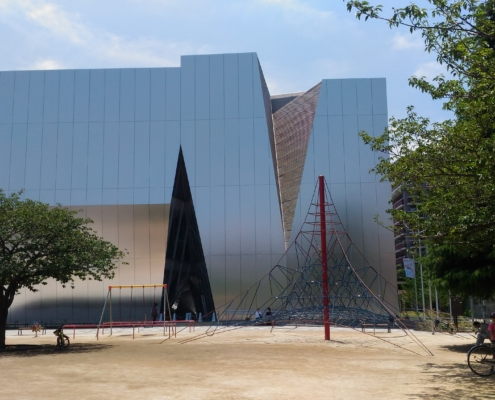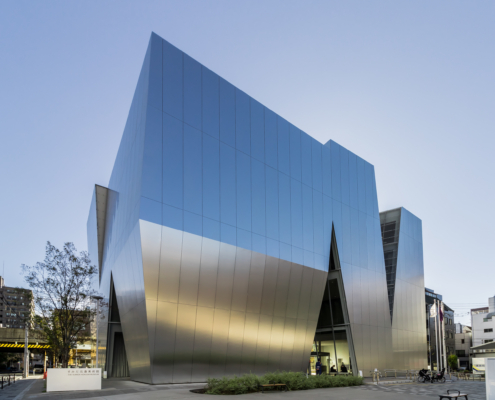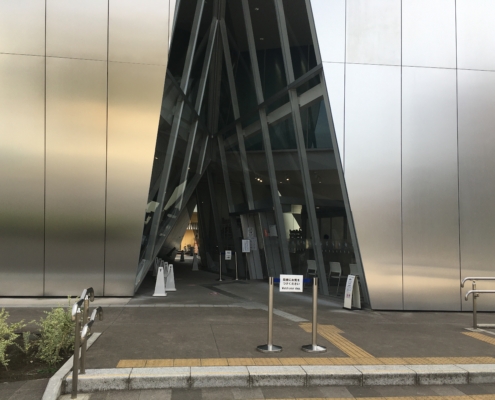"
Katsushika Hokusai, the artist behind the The Great Wave Off Kanagawa—a painting so famous it even has its own emoji—now has a museum dedicated to his work. The Sumida Hokusai Museum in Tokyo opened in November last year and was designed by Japanese architect Kazuyo Sejima, co-founder of SANAA.
Inside, more than 18,000 works from Hokusai and his protégés are on display. On the outside, however, a reflective aluminum skin wraps around the entire structure, dampening its monolithic form. The aluminum facade comprises an arrangement of angled panels. This formation allows the museum entrance to remain ambiguous and relatively undefined. Meanwhile, angled cuts through the building also soften the form’s presence while serving as a way of allowing daylight in—the museum has no directly outward facing windows. (Courtesy Vincent Hecht)
In addition to letting light in, the angular voids also provide views out. Museum-goers can enjoy vistas of Japan’s capital city from within when on the upper levels. Walkways and programming too are defined by these incisions.
As part of the brief, Sejima was asked to design a museum that appealed to both tourists and locals. Hokusai lived in the region of Sumida, Edo (now known as Tokyo) roughly 200 years ago. The museum dedicated to his work and legacy resides in the same area—hence its name. The Pritzker Prize–winning architect’s five-story building not only holds close to 20,000 works but, includes seminar, lecture, and workshop spaces, as well as a research center. This program is a bid to broaden the scope of Hokusai’s work, making it accessible to a wider audience and cementing his status within the art world.
"
Information provided in part by: The Architect's Newspaper







